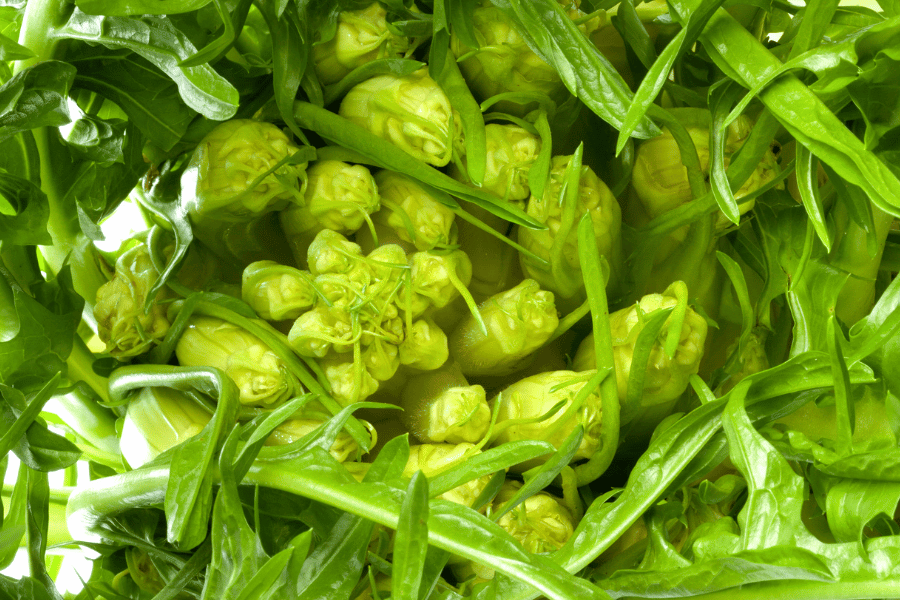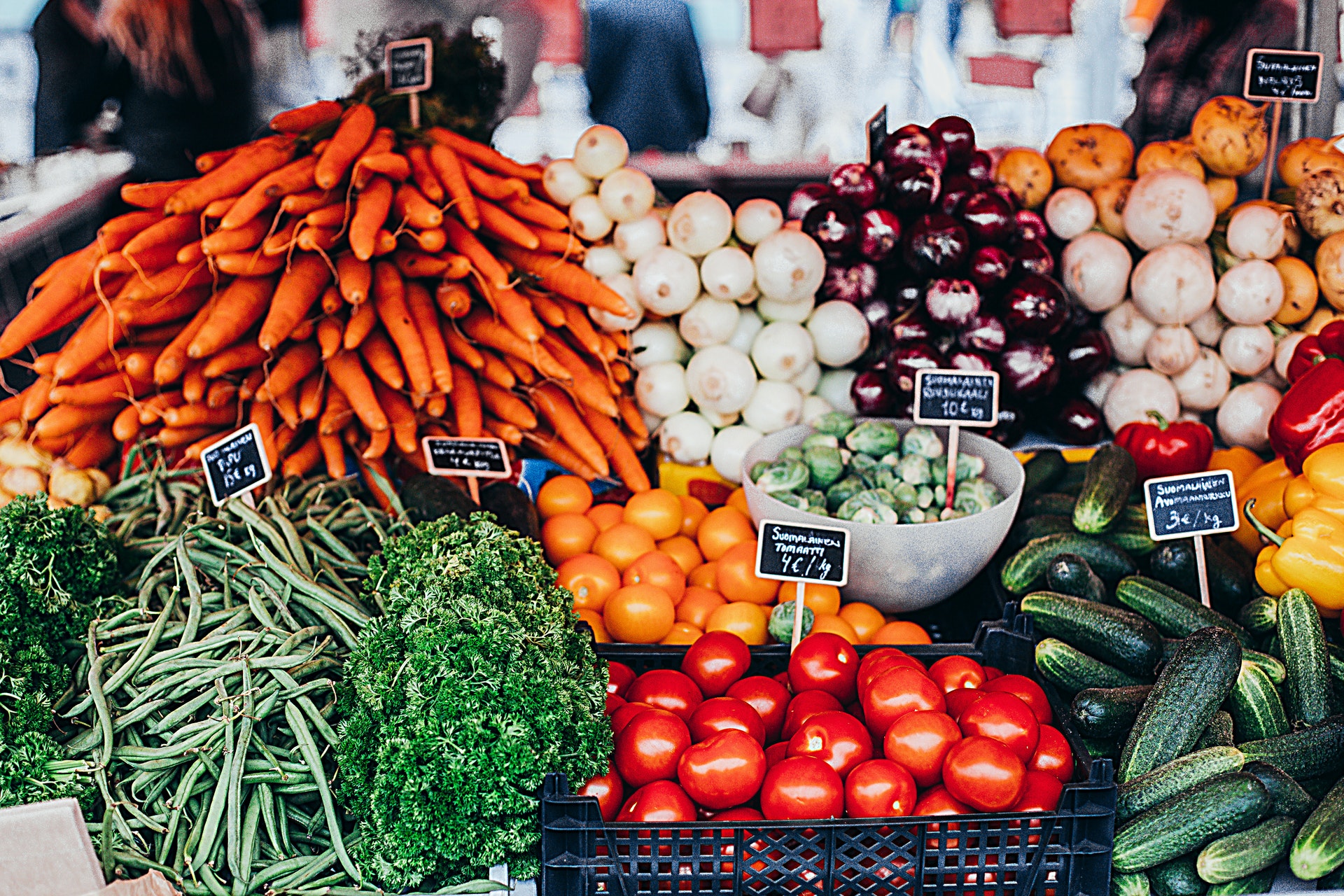When moving to Italy and exploring Italian supermarkets, I was confronted with different produce that I’d never seen before.
Italian cuisine still remains very traditional. Growing your own food, foraging and preparing traditional dishes is still highly valued and quite common.
Although the modernization of agriculture has greatly reduced the variety in what we eat, placing importance on preserving traditions and seeds over centuries have greatly helped Italy’s agrobiodiversity. In fact, Italy is one of the first countries to actively combat their agri-food losses by creating important national measures involving registration, preservation, research and quality control of seeds and species. In addition, they provide resources and are incentivizing farmers to switch to organic biodiverse agricultural models.
> Read about agrobiodiversity in Italy here
> Read about why you should care about agrodiversity here
> Read about the different measure that promote a healthier agricultural industry here
Produce That You Have Probably Never Heard Of:
1. Agretti

In Italy, Agretti or Saltwort in English is also known as Barba di Frate (Friar’s beard). It’s a succulent-like plant that grows well with salt water and is found along the coast in Italy. It can be eaten raw or cooked. It is crunchy, tarte, and has a minerally taste that is a bit similar to spinach. In Italian cuisine it is used in pastas, frittatas, salads or on its own as a side dish.
Agretti is loaded with nutritional benefits. It has antioxidants, iron, calcium, vitamins A, K and C. It has depurative properties that helps remove toxins from the body and regulates bodily functions. In traditional Chinese medicine, Agretti is known to cleanse the blood.
2. Cicoria

Cicoria in English is known as Chicory Greens, dandelion greens or wild endives. It’s a leafy green with white stems. It has been cultivated since ancient times and has edible leaves, stems and flowers.
Chicory Greens are very common in southern Italian cuisine, cooked in pastas or as a side. They have a bitter, almost spicy flavor. A popular dish from the Apulian region is fave e cicoria. The greens are sauteed with garlic, chilis and olives. They are then laid on top of pureed fava beans.
Cicorie are very low in calories, have amazing health benefits and have also been used medicinally. Chicory greens have high levels of vitamin A, beta-carotene, vitamin K, vitamin C, and essential B-complex groups (like folic acid, pyridoxine, thiamin, and niacin). They are also a great source for manganese, calcium, potassium, copper and iron.
They have been shown to reduce blood glucose and decrease LDL cholesterol levels with people suffering from obesity and diabetes. In addition, Cicoria is used with patients with Alzheimers as it has been shown to inhibit the degeneration of the brain’s neurons.
3. Cedro, Pompia, Bergamotta, Chinotto

Cedro (pictured above), pompia, bergamota and chinotto are all different types of citrus fruits that are native to Italy and not commonly known outside of the country. The cedro is known as a citron in English. It’s about three times the size of a normal lemon and has a bumpy rind. A Pompia is as large as a grapefruit and is only found in Sardegna.
Bergamota or Bergamot oranges are native to the Calabria region in southern Italy. They are green and are about the size of an orange. Today this fruit is more well known as it is used as an aromatic in fragrances and essential oils.
Lastly, the chinotto oranges are green and ping-pong sized. They were introduced to Italy in the 1500s and have become very popular. They have a sour orange flavor that are widely used in sweets, herbal liqueurs, candied and as a popular soda flavor.
These Italian citrus fruits have various health and medicinal benefits, some which have been noted since antiquity. For example, the Cedro is high in vitamin C, potassium and magnesium. Its rind has oils with antibiotic and antimicrobial properties. Bergamotto has been used to help with joint pain, anxiety, mental alertness and other conditions.
4. Puntarelle

Puntarelle, also called cicoria di catalogna and cicoria asparago are in the chicory family. They are found in central and southern Italy and are traditional in both Roman and Apulian cuisines.
They have a rich bitter flavor and can be eaten either cooked or raw in a salad. Puntarelles have been known since Roman times to have a ton of health benefits, especially when eaten raw.
Puntarelles are very high in minerals and vitamins. They help stimulate blood circulation and remineralize the body. They reduce the bad cholesterol and sugars in the blood. They have detoxification, diuretic and depurative properties that help with liver, kidneys and intestinal function. Their anti-inflammatory properties have shown to be effective with joint pain.
5. Radicchio

Radicchio is a vegetable that is a little more well known internationally, but still misunderstood. You can sometimes find it in some Italian restaurants, however it’s usually used more to add color to a dish.
Radicchio is a reddish, purple leafy vegetable that originated from the Veneto region in Northern Italy. It has a bitter, spicy flavor that is traditionally used in pasta and risotto dishes. It can also be eaten raw, grilled or roasted.
They have a really great vitamin and mineral profile including being very rich in vitamin K. They are a great source of dietary fiber, have a low calorie content, and also have antioxidants.
6. Barattiere, Carosella, Meloncella

Barattiere, carosella and meloncella are all cucumber like fruit. (Yes, cucumbers are technically fruit). Barattiere are one of the traditional fruits that have been grown here traditionally on only a hectares of land in Puglia. A barattiere has qualities of both a melon and cucumber. It looks more like a melon, with the sweetness profile between a cantaloupe and a cucumber.
A carosella is an Apulia type of cucumber that also visually resembles more like a melon. A melsoncella, also native to this same regions, looks like a smaller, round cucumber. It has a low sugar profile and is rich in vitamins A, C and calcium.
These three typically Apulian fruit are typically eaten raw, plain or in a salad.
7. Cime di Rapa and Rapini

Cime di rapa is a brassica, in the cruciferous vegetable family. It is grown in different regions of southern Italy and although resembles a very leafy broccoletti, it’s actually more closely related to turnips. Cime di rapa are slightly bitter to the taste and are used in one of the famous dishes in Puglia, ‘Orrechiete alle cimi di rapa.’
Cime di rapa are low in calories and rich in various vitamins and minerals like phosphorus, calcium and iron. They contain vitamins A, B and C and are a great source of folates.
Rapini or broccoli rabe is another cruciferous vegetable that is native to the Mediterranean basin. It’s a leafy vegetable with small broccoli- looking heads. The leaves, stems and buds are edible. Rapini’s are nutty and bitter to taste and are widely used in mediterranean cuisines.
8. Salsify

Salsify, also known as Scorzonera or Oyster vegetable, is a root vegetable from the Mediterranean basin. It’s in the dandelion family and looks like a long, skinny turnip. It has a delicate, almost sweet flavor. It can be eaten raw or cooked, although not everyone can easily digest it in its raw form.
Salsify has been consumed since Greek antiquity and was also historically used as an antidote to snake bites. It has a rich vitamin and mineral profile, including vitamin B complex, vitamin A, vitamin C and vitamin E.
9. Cardi

Cardi are also known as cardoons or artichoke thistle. It’s the vegetable from which artichokes derive from. It’s a plant native to the Mediterranean and has been cultivated in these regions since the roman empire. Instead of eating the flower bud, like for artichokes, the stems of cardoons are eaten.
Cardis are nutrient rich vegetables. They contain loads of vitamins and minerals. Cardi are used medicinally to help with liver and gallbladder function. They have anti inflammatory, antioxidant, anti-tumoral and neuroprotective properties.
10. Lampascione

Lampascione is the edible bulb of a plant called Leopoldia Comosa or Tassel Hyacinth. They look like little onions and have a bittersweet flavor. They can be eaten raw or cooked. Lampascione have been part of culinary tradition in the south of Italy and Greece since Roman times and have also been mentioned in classical Hebrew literature from the late 2nd century.
They have anti inflammatory, diuretic, laxative and depurative properties. They have been used since antiquity as an aphrodisiac and a stimulant. Today in Puglia you can commonly find them pickled and preserved in olive oil.
Source:
“Cedro Citrons,” Specialty Produce.
“Chicory greens Nutrition facts,” Nutrition And You .
Elle. “Tutto sulla scorzonera o ‘asparago d’inverno,'” Tutto Green, December 2022.
Forrisi, Gina. “Cardo: proprietà, valori nutrizionali, calorie,” Cure Naturali
“Health Benefits of Radicchio,” Nourish by WebMD, September 2022.
Lixandru, Marius. “Properties and Benefits of Agretti,” Nature World, May 2021.
“Puntarelle: Proprietà, Benefici, Uso e Controindicazioni,” Portale Benessere, September 2017.






